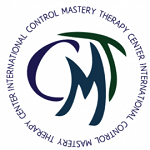- Have any questions?
- 510-612-6392
- infocmtcenter@gmail.com
So the question arises: what does all of this this say about Neutrality?
July 4, 2017What is Control Mastery Theory- The Dance of Psychotherapy ( a paper written by Jessica Broitman and presented by Jessica Broitman and Ginger Rhodes Cuba 2016)
Control Mastery theory was developed by Joe Weiss (1924 – 2004) and researched by Hal Sampson (1925 -2015) and the many theoreticians involved with SFPRG. CMT offers one a foundation, scaffolding or container for understanding how psychotherapy works. Weiss suggests that patients enter treatment with a (unconscious) plan to mastery (overcome or deal with) the traumatic events, which leads to their symptoms and inhibitions. His straightforward concepts and structure offer an elegant platform from which to begin the dance of psychotherapy.
In what follows I will delineate some of the therapeutic dance steps (techniques), learned through our understanding and grounding in Control Mastery Theory, that have joined our repertoire for successfully interacting with our patients. First I will offer a brief overview of the theories of Sampson and Weiss.
In part 2, I will begin to go into detail regarding a dozen or so of the technical concepts, derived from the CMT that we’ve found most useful including how you infer your patient’s plan and pass their tests.
Control Mastery theory is considered an object relational type of therapy, which is a type of Psychoanalytic psychotherapy which originates from the works of Sigmund Freud. Within the history of the field, the term object has been used to describe your relationship with both real people in the external world and the images/ experience of them that are established internally. This dual connection is helpful in describing the interchange between the inside and outside that occurs inside all of us and in all treatments. We are often asked why was it called Object relations ? Isn’t therapy about people? Object is used as it is a tangible term and it’s meaning is flexible in accord with the pts. experience of their interchanges/ interactions with their objects. These interchanges carry a unique experiential reality for our patients. An object, despite its durability, can be manipulated and modified. It can be reshaped, repaired, repainted, cut in two, even destroyed. It suggests that there are Interpsychic operations that can be performed upon objects that correspond to the experiences that the patient have.
That means that there are mental representation of others that we carry internally and that have some of the real characteristics of people, as well as their capacity to trigger behavioral responses. They have different names in different systems, such as: internal objects, schemas, introjects, personifications etc. In control mastery theory we talk about the pathogenic beliefs that carry the internalization of these primacy relationships. They produce a residue within the mind pertaining to these relationships with important people in the individual’s life. In some way these exchanges with others leave their mark, and they come to shape our attitudes, reactions, and perceptions. It is these early beliefs and feelings that must be discovered through interactions with our patients. One could just as easily refer to theses as Schemas, conflicts, or internalized objects.
All discussion of Object Relations theories begins with Melanie Klein – (born 30 March 1882 – 22 September 1960), who is known as the mother of object relations. She was an English psychiatrist and contemporary of Freud, analyzed by Ferenczi, who was the first to apply psychoanalytic techniques to the treatment of children. She built on Freud’s theories to hypothesized that the child’s world contained good and bad objects, created from the projections and introjections of his caretakers. The child both loves and hates their parents and alternates between “positions”: the paranoid- schizoid, and the depressive positions. While Klein first introduced the concept of object relations, Otto Rank (1920) coined the term “pre-Oedipal,” and was the first to create a modern theory of “object relations” in the late 1920s.

